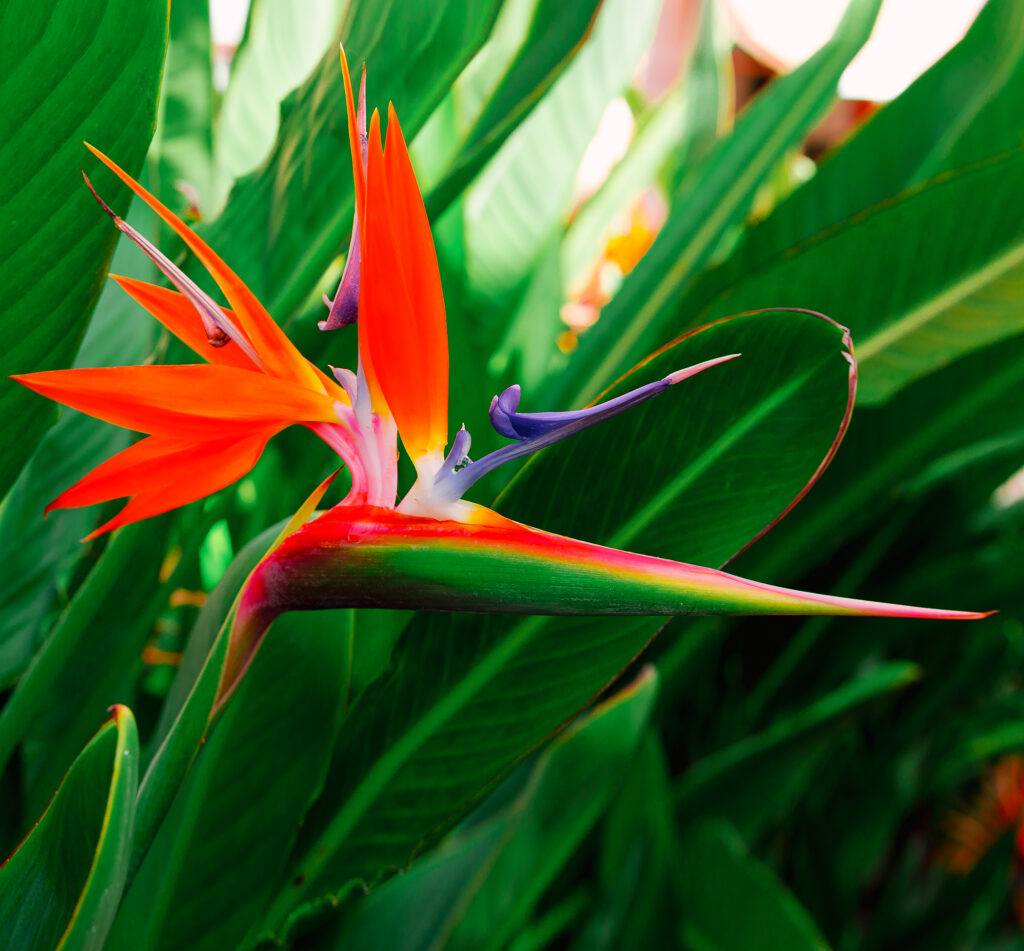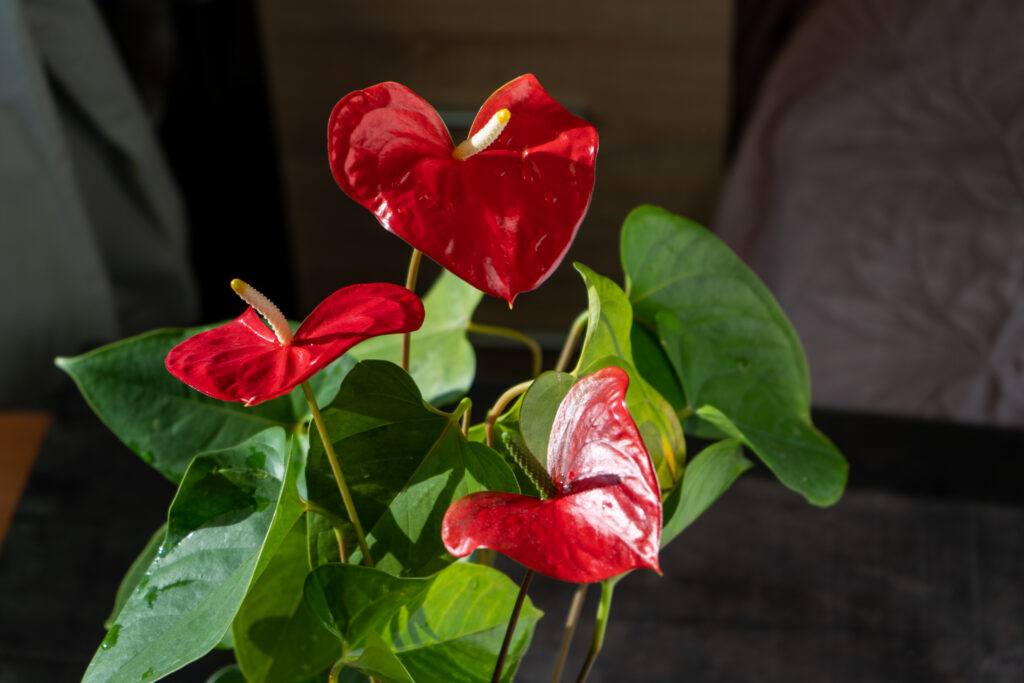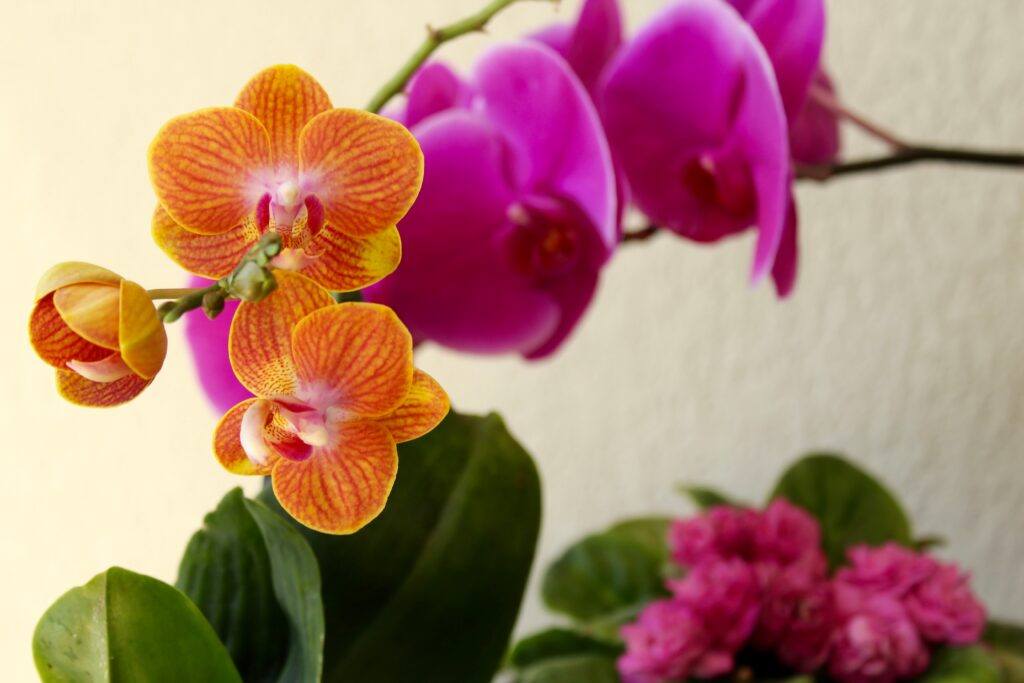
Bringing the lush, tropical allure of exotic plants into your indoor space can elevate both your decor and your mood. As a plant expert, I’ve seen firsthand how unique species not only enhance interiors but also spark curiosity and admiration. Exotic houseplants often feature bold foliage, unusual growth habits, and a striking presence—but they do come with their own set of care needs.
Exotic indoor lants bring an unmatched tropical flair to interior spaces, often with unique foliage or rare blooms that spark conversation and admiration. Just be sure to learn the basics of indoor tropical plant care to help them thrive. In this article, we’ll explore some of the most popular exotic indoor plants and provide care tips to help you keep them healthy, thriving, and beautiful year-round.
Exotic indoor plants stand apart, captivating us with their rare beauty. These aren’t your everyday houseplants. We’re talking about plants with rare species, vibrant tropical varieties, and others with unusual foliage. Their unique growth habits make them the stars of your plant lineup. You might think about lush ferns or unique greenery that turns heads. That’s what makes them exotic.
These plants are more than just decorative; they are living artworks. An exotic plant brings a piece of the rainforest or desert right into your home, adding vivid splashes of color and striking textures. Imagine how a Monstera with its big, holey leaves or a bright Hibiscus could transform your living room into an indoor paradise.
Beyond their beauty, exotic plants can also spark conversation. Imagine a guest admiring your lush Bird of Paradise plant, prompting a chat about its origins and care. Plus, there’s a growing culture around collecting these unique species, creating a fascinating hobby.
Proper care is crucial for these beauties. They may require specific microclimates, which means setting up just the right environment with enough humidity, light, and warmth. This might sound like a lot, but the reward is unmatched. With their vibrant leaves and sometimes even flowers, these plants turn any space into a living art gallery.
Top Exotic Indoor Plants & How to Care for Them

Many exotic plants are conversation starters, like the flamingo plant or dramatic banana plant—especially when growing banana plants in pots indoors.
Flamingo Flower
- Light: Bright, indirect
- Water: Keep soil evenly moist
- Humidity: High
- Notes: Toxic to pets; produces vibrant flowers year-round in ideal conditions
Alocasia Polly
- Light: Bright, indirect
- Water: Keep soil consistently moist, but not soggy
- Humidity: High—mist regularly or use a pebble tray
- Notes: Goes dormant in winter; sensitive to overwatering
Swiss Cheese Plant
- Light: Bright, indirect
- Water: Let top inch of soil dry out
- Humidity: Medium to high
- Notes: Provide a moss pole or support to climb
Bird of Paradise
- Light: Bright light, some direct sun
- Water: Moderate; allow soil to dry slightly between waterings
- Humidity: Moderate; occasional misting helps
- Notes: Large leaves need dusting; blooms with age in optimal conditions
Flamingo Flower
- Light: Bright, indirect
- Water: Keep soil evenly moist
- Humidity: High
- Notes: Toxic to pets; produces vibrant flowers year-round in ideal conditions
Air Plants
- Light: Bright, filtered light
- Water: Soak in water for 20–30 minutes weekly; shake off excess
- Humidity: Medium to high
- Notes: No soil needed; great for creative displays
Orchids
- Light: Bright, indirect
- Water: Allow a couple of inches to dry between waterings
- Humidity: High
- Notes: should be fed with a water-soluble orchid fertilizer every 2 weeks
Climbing Stephania
- Light: Bright, indirect
- Water: Let dry slightly between waterings; avoid root rot
- Humidity: Moderate
- Notes: Grown from a caudex; slow-growing and highly collectible
Fiddle Leaf Fig
- Light: Bright, indirect (some direct okay)
- Water: Allow top inch or two of soil to dry
- Humidity: Moderate
- Notes: Avoid cold drafts and frequent moves
Wax Plant
- Light: Bright, indirect; tolerates some direct sun
- Water: Allow to dry out between waterings
- Humidity: Moderate
- Notes: Blooms fragrant clusters; prefers snug pots
Expert Tips for Exotic Plant Success

- Acclimation: Exotic plants may need time to adjust to new indoor conditions.
- Humidity hacking: Use humidifiers, group plants, or place near bathrooms.
- Soil strategy: Use well-draining tropical mixes with added perlite or orchid bark.
- Lighting: South or east-facing windows are best; use grow lights as needed.
- Feeding: Fertilize with balanced or foliage-specific fertilizer during active growing months.
- Quarantine new plants: Prevent pest spread to your collection.
Exotic houseplants bring visual intrigue and vibrant energy to indoor spaces. These plants aren’t just decor—they’re personality pieces, whether it’s a bird of paradise or one of the many eye-catching, easy to grow orchids. While they may require more attentive care than standard houseplants, the payoff is immense: bold textures, vivid colors, and the satisfaction of nurturing something rare.
Start with a few that match your light and humidity levels, and gradually expand your indoor jungle with confidence and creativity. Perhaps pick one or two exotic plants as you begin your journey. Grow your confidence as you learn to nurture these plants, and soon, your collection will leaf out into a personal jungle oasis.

I really enjoyed this article — great selection of exotic indoor plants and clear explanations for each one. I live right across the road from a beautiful native forest, so I love bringing a bit of that lush greenery indoors too.
Your list makes it easy to find something unique for any room. One idea: it would be fantastic to see some photos of the plants you mention — it would help readers visualize them and pick their favorites more easily. I love the visual impact of lush exotic plants and would really appreciate some graphics for comparisons.
Thanks for the inspiration — I’m definitely adding a few of these to my indoor collection!
Mark,
Thank you and I’m glad you enjoyed the article on exotic indoor plants. Some exotic plants require very specific conditions to thrive, but they are worth the work.
You must have read the article before I added some pictures; you might want to go back to see.
What a lovely post. You have converted me – I now want a Bird of Paradise plant for my table. I do outdoor deck container plants but really don’t have plants inside my home. Your post has oppened my eyes to think about getting at least one nice and exotic plant for inside. I also read your post on tropical plant care. Where do you suggest I order my Bird of Paradise plant? -Shirley
Shirley,
I’m glad you enjoyed my article. Bird of Paradise is such a striking and beautiful plant. There are so many places you can find Bird of Paradise. If you live in a warm climate, I would purchase one from a local nursery that specializes in tropical plants. If you live in colder areas, I personally would try Etsy, as you have so many growers to choose from.
Loved reading your article on plant nice to see what is toxic to animals. I don’t have many plants at home because I didn’t know what is toxic now I know.
Kristy,
I’m glad you found my article informative. It’s so important to keep our animal friends safe and healthy.